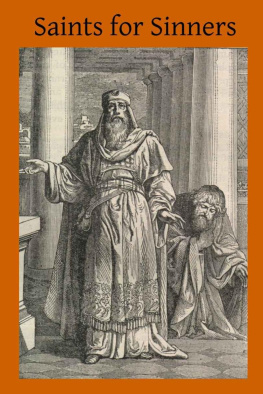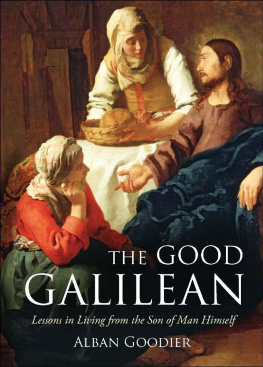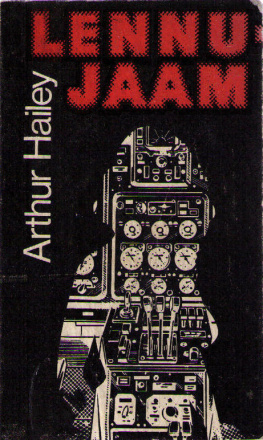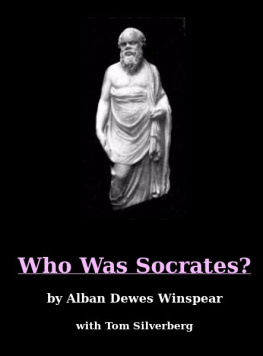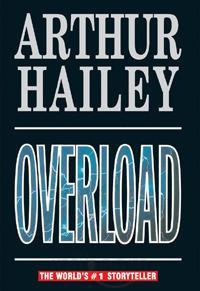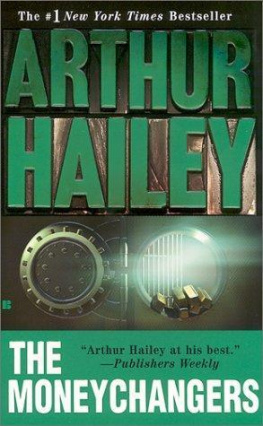Hailey Christopher - Alban Berg and His World
Here you can read online Hailey Christopher - Alban Berg and His World full text of the book (entire story) in english for free. Download pdf and epub, get meaning, cover and reviews about this ebook. year: 2010, publisher: Princeton University Press, genre: Non-fiction. Description of the work, (preface) as well as reviews are available. Best literature library LitArk.com created for fans of good reading and offers a wide selection of genres:
Romance novel
Science fiction
Adventure
Detective
Science
History
Home and family
Prose
Art
Politics
Computer
Non-fiction
Religion
Business
Children
Humor
Choose a favorite category and find really read worthwhile books. Enjoy immersion in the world of imagination, feel the emotions of the characters or learn something new for yourself, make an fascinating discovery.

- Book:Alban Berg and His World
- Author:
- Publisher:Princeton University Press
- Genre:
- Year:2010
- Rating:3 / 5
- Favourites:Add to favourites
- Your mark:
- 60
- 1
- 2
- 3
- 4
- 5
Alban Berg and His World: summary, description and annotation
We offer to read an annotation, description, summary or preface (depends on what the author of the book "Alban Berg and His World" wrote himself). If you haven't found the necessary information about the book — write in the comments, we will try to find it.
Alban Berg and His World — read online for free the complete book (whole text) full work
Below is the text of the book, divided by pages. System saving the place of the last page read, allows you to conveniently read the book "Alban Berg and His World" online for free, without having to search again every time where you left off. Put a bookmark, and you can go to the page where you finished reading at any time.
Font size:
Interval:
Bookmark:
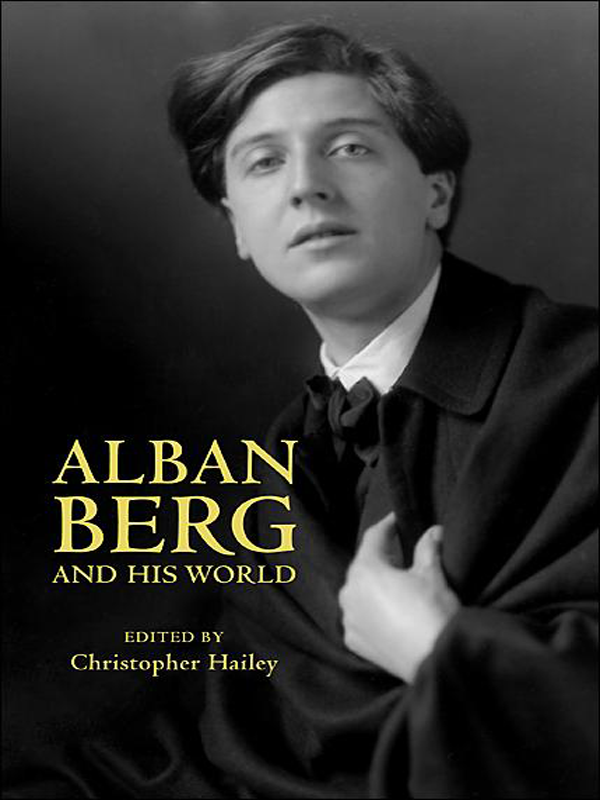
ALBAN
BERG
AND HIS WORLD
Edited by
Christopher Hailey
PRINCETON UNIVERSITY PRESS
PRINCETON AND OXFORD
Copyright 2010 by Princeton University Press
Published by Princeton University Press, 41 William Street,
Princeton, New Jersey 08540
In the United Kingdom: Princeton University Press,
6 Oxford Street, Woodstock, Oxfordshire OX20 1TW
press.princeton.edu
All Rights Reserved
For permissions information, see page xv.
Library of Congress Control Number 2010925390
ISBN: 978-0-691-14855-7 (cloth)
ISBN: 978-0-691-14856-4 (paperback)
British Library Cataloging-in-Publication Data is available
This publication has been produced by the Bard College Publications Office:
Ginger Shore, Consultant
Christina Clugston, Cover design
Natalie Kelly, Design
Text edited by Paul De Angelis and Erin Clermont
Music typeset by Don Giller
This publication has been underwriten in part by a grant
from Furthermore: a program of the J. M. Kaplan Fund.
Printed on acid-free paper.
Printed in the United States of America
1 3 5 7 9 10 8 6 4 2
Dedicated to the memory of George Perle
Bergs Worlds
CHRISTOPHER HAILEY
Hermann Watznauers Biography of Alban Berg
TRANSLATED AND ANNOTATED BY NICK CHADWICK
A Descriptive Overview of Bergs Night/Nocturne
INTRODUCTION BY REGINA BUSCH
TRANSLATED, EDITED, AND WITH COMMENTARY BY CHRISTOPHER HAILEY
Berg and the Orchestra
ANTONY BEAUMONT
deinen Wuchs wie Musik: Portraits, Identities, and the Dynamics of Seeing in Bergs Operatic Sphere
SHERRY D. LEE
Remembrance of things that are to come: Some Reflections on Bergs Palindromes
DOUGLAS JARMAN
1934, Alban Berg, and the Shadow of Politics: Documents of a Troubled Year
INTRODUCTION, TRANSLATIONS, AND COMMENTARY BY MARGARET NOTLEY
Alban Berg zum Gedenken: The Berg Memorial Issue of 23: A Viennese Music Journal
TRANSLATED AND ANNOTATED BY MARK DEVOTO
Alban Berg and the Memory of Modernism
LEON BOTSTEIN
Alban Berg has never fit comfortably into the narrative of the Second Viennese School. His expressive Romanticism with its nostalgic references to tonality, his attachment to the preoccupations of fin-de-sicle Vienna, and the sheer sensual appeal of his music have always made him suspect to doctrinaire modernists. Part of the problem, of course, lies in his devotion to Arnold Schoenberg, a figure who created a teleology of musical progress so compelling and domineering that in the searing intensity of its glare even Schoenbergs own workscontradictory and multi-facetedhave been bleached of their historical contingency. As for Schoenbergs students and followers, who among them is not first and foremost a disciple, even when a renegade? All except Alban Bergso gracious and accommodating, loyal and devoted, and so very passive in his resistance. He maintains a special place in that narrative because even in its glare he managed to seek and find the shadows.
History is texture and texture loves a glancing light. This volume of essays, a companion to the 2010 Bard Music Festival, is an attempt to nudge Berg still further from the flattening perspective of Schoenbergs radiance by shining just such an angled light upon his music, his character, and his relationship to some of the broader issues of Viennese and European musical culture. If this carries with it more than a whiff of revisionism, it is a revisionism whose larger purpose is not to overthrow established figures but to reconnect them to their times.
To regard Viennese musical modernism as a saga of harmonic evolution from late-Romantic chromaticism through atonality to serialism is to dismiss nine-tenths of all that this rich musical culture produced. For decades research has been driven by a preoccupation with the consequences of the atonal and serial revolutions, a narrative that excluded, by definition, all composers who pursued other paths. This preoccupation encouraged a general cultural bias that also banished them from the concert and recorded repertory, published music histories, classroom syllabi, and academic research. In the 1960s and 70s, a postwar generation of composers, theorists, and historians was growing ever more conscious of the ruptures caused by totalitarian ideologies, the Holocaust, and the Cold War. It was a generation suspicious of dogma and teleology and eager to poke around in the rubble in search of overgrown paths and distant sounds. For them the question of musical syntax was but one of many contested legacies. Their interest in reviving forgotten figures and obscured connections also reflected a gradual transformation of the compositional landscape in which minimalism, neotonality, and stylistic pluralism were only the most prominent signs of the collapse of the familiar modernist narrative. This pluralistic approach led in turn to a more expansive view of modernism itself, including the cultural sphereturn-of-the-century Viennathat had nourished Schoenberg and his circle. It is in this context that the Mahler revival began in earnest and Alban Berg slipped out the backdoor of the Second Viennese School to take his place among the truants milling around the schoolyard.
One telling example of this transformation is the way a renewed interest in opera and music theater has revolutionized our understanding of twentieth-century music history. Bergs commitment to opera (a genre entirely absent in Weberns oeuvre and approached by Schoenberg with evident reserve) places him squarely in the midst of a remarkable resurgence of dramatic musical forms in early twentieth-century Austria, with direct links to two of its most significant practitioners, Franz Schreker and Alexander Zemlinsky. Zemlinsky and Schreker are two of dozens of Austrian composers, including Erich Wolfgang Korngold, Franz Schmidt, Julius Bittner, Egon Wellesz, and Ernst Krenek, who made the stage a crucial locus of musical and intellectual discourse. In a history with opera as its focus, harmonic language takes its place as one of many elements in a far wider field of cultural and aesthetic inquiry. If this serves to relativize Schoenberg or Weberns historical significance, their works, like those of Berg, are only enriched by an enhanced depth of field.
This volume is dedicated to the memory of the composer, musicologist, theorist, and teacher George Perle, who in many ways paved the way for this transformed cultural landscape. Perle got to know Bergs music in 1937, when he chanced upon a score of the Lyric Suite.He was immediately struck by certain features that suggested a highly idiosyncratic application of the serial method. It was an encounter that led to a lifelong fascination with Bergs music, as well as to a series of theoretical ruminations that had profound consequences for his own music, a remarkable body of work with little apparent debt to Bergs style but greatly influenced by his example.
The parameters of Perles initial Berg publications were largely defined by issues that interested him as a composer, issues concerning musical language and creating tonal coherence within an atonal context: what he came to call twelve-tone tonality. In the 1970s and 80s Perle led a phalanx of Anglo-American Berg scholars who virtually redefined Bergs significance within the so-called Second Viennese School. It was, in a sense, a rescue operation because although Perle himself was no doctrinaire purist, his argument was driven by the conviction that Bergs credentials as a modernist were to be found in the layered complexity of his musicin those intricate stratagems of design by which Berg himself seemed determined to dodge the epithet
Font size:
Interval:
Bookmark:
Similar books «Alban Berg and His World»
Look at similar books to Alban Berg and His World. We have selected literature similar in name and meaning in the hope of providing readers with more options to find new, interesting, not yet read works.
Discussion, reviews of the book Alban Berg and His World and just readers' own opinions. Leave your comments, write what you think about the work, its meaning or the main characters. Specify what exactly you liked and what you didn't like, and why you think so.

